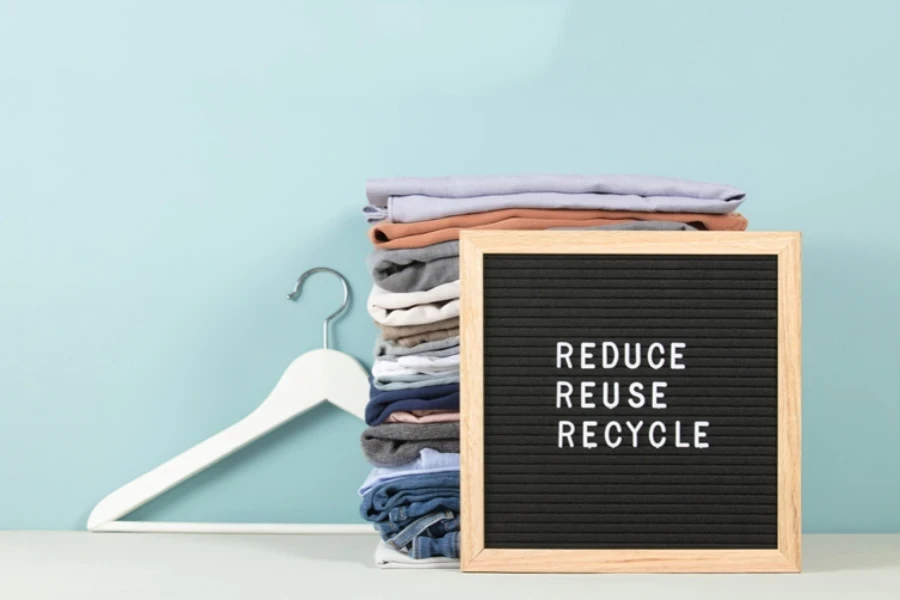Have you ever cleaned out your closet, garage, or storage space and wondered what to do with the things you no longer use? You might have considered selling them, but selling used items can be time-consuming. One easy workaround is finding a consignment shop: a business that sells items on behalf of the owner and takes a percentage of the sale.
In this article, w’ll explore what consignment shops are, how they work, and how you can benefit from selling products to them, and even how to open a consignment shop yourself.
Table of Contents
How does a consignment shop work?
Types of items sold at consignment shops
Benefits of opening a consignment shop
Low inventory costs
Appeal to eco-conscious consumers
Flexible business model
Challenges with the consignment model
Steps to start a consignment shop
Research your market
Choose a location
Set clear policies
Invest in marketing
Track inventory
FAQs about consignment
How does a consignment shop work?

A consignment shop acts as a middleman between sellers and buyers. Sellers bring items to the shop, and the shop handles pricing, marketing, and selling. The shop owner keeps a percentage of the sale price, typically between 30% and 50%. In some cases, they may take a flat fee.
For example, a usual consignment process may something like this:
- A seller brings a designer handbag to a consignment shop
- The shop prices the handbag at USD 100
- If the handbag sells, the shop keeps USD 40 (40% commission), and the seller receives USD 60
Generally, in this scenario, the product belongs to the consignment store until it sells. That’s why there should always be a consignment agreement signed between the seller and the shop.
Types of items sold at consignment shops
Consignment shops vary widely in what they accept. Some specialize in high-end fashion or other luxury goods, while others focus on furniture, children’s items, or antiques. Common categories include:
- Clothing and accessories: Designer brands and gently used fashion items are particularly popular
- Furniture and home décor: Quality used furniture and unique decorative items
- Electronics: Gadgets like laptops and smartphones in working condition
- Sporting goods: Equipment for activities like skiing, golfing, or cycling
- Children’s items: Baby gear, toys, and clothes that kids outgrow quickly
In 2023, the global resale market for secondhand and resale apparel was estimated to be worth USD 197 billion, while the global secondhand market is set to reach USD 350 billion.
Benefits of opening a consignment shop

Considering opening a consignment shop? Here are some of the benefits:
1. Low inventory costs
One of the biggest advantages of a consignment shop is that you don’t have to purchase inventory upfront. Instead, you receive goods from sellers and only pay them when items sell. This reduces financial risk and allows you to operate with lower startup costs.
2. Appeal to eco-conscious consumers
Consignment shops align with the sustainable shopping trend. In 2022, 62% of Gen Z shoppers said they preferred buying secondhand items to reduce waste. Marketing your shop as an eco-friendly alternative can attract customers who value sustainability.
3. Flexible business model
Consignment shops can be physical stores, online platforms, or a combination of both. Online consignment platforms like Poshmark and ThredUp have shown that you don’t need a storefront to succeed.
Challenges with the consignment model

While consignment shops offer many benefits, they also come with challenges:
- Supply uncertainty: The business model relies on sellers for a steady stream of inventory
- Complex inventory management: You will need adequate space to store and organize products. Additionally, it’s important to ensure products are safe as the store doesn’t own the products until they’re sold.
- Unsold inventory: Not all items will sell, and shops may have limited space to store unsold goods. Many shops impose time limits and return unsold items to sellers after a set period.
- High competition: With the rise of online resale platforms, consignment shops face stiff competition. Differentiating your business with unique items or exceptional customer service is crucial. Physical businesses may want to consider having an online presence as well.
- Quality control: Ensuring all items meet a certain quality standard can be time-consuming. Shops need to inspect goods carefully to maintain their reputation.
Steps to start a consignment shop

1. Research your market
Determine the type of items in demand in your area. For example, a consignment shop near a college campus might focus on trendy clothing, while a suburban area might demand children’s items.
2. Choose a location
Decide whether to operate online, in a physical space, or both. Online shops have lower overhead costs, but physical stores provide a tactile shopping experience.
3. Set clear policies
Establish rules for what items you’ll accept, how long items will stay in the store, and the percentage of the sale you’ll take. Many consignment shops offer contracts specifying these details.
4. Invest in marketing
Social media platforms like Instagram and TikTok are great for showcasing unique items. Consider collaborating with influencers or offering discounts to attract initial customers.
5. Track inventory
Use software to keep track of what’s been consigned, sold, and paid out to sellers. Tools like ResaleAI or SimpleConsign can streamline operations.
FAQs about consignment

1. What is a consignment shop?
A consignment shop is a store that sells items on behalf of the original owner. The shop keeps a percentage of the sale price as a commission and gives the remaining amount to the seller.
2. How do consignment shops price items?
Shops usually price items based on their condition, brand, and demand. Many shops have experienced staff who research pricing trends to set fair and competitive prices.
3. What happens if my items don’t sell?
If an item doesn’t sell within a specified time (often 30-90 days), the shop may return it to you, reduce the price, or donate it to charity. This depends on the shop’s policy, so it’s essential to read the contract.
4. Are consignment shops the same as thrift shops?
Not exactly. While both sell secondhand items, thrift stores typically operate as nonprofits and accept donations, while consignment shops work on a commission-based model, splitting profits with sellers.
5. Can consignment shops sell online?
Yes! Many consignment shops operate entirely online or offer both in-person and online sales. Platforms like Poshmark and ThredUp are examples of online consignment models.
6. What’s the difference between consignment and dropshipping?
Consignment involves selling pre-owned goods on behalf of sellers, while dropshipping is a business model where retailers sell new products from suppliers without holding inventory.
7. How do I choose the right consignment shop to sell my items?
Look for a shop that specializes in the type of items you want to sell and has a good reputation. Check their commission rates, policies, and customer reviews before committing.
Final thoughts
A consignment shop is a versatile and sustainable business model that benefits both shop owners and sellers. With the resale industry booming, there’s never been a better time to embrace the consignment model.
Whether you’re looking to open a shop or sell items through consignment, understanding the process is key to success. With careful planning, you can tap into the growing demand for secondhand goods and build a profitable business.




